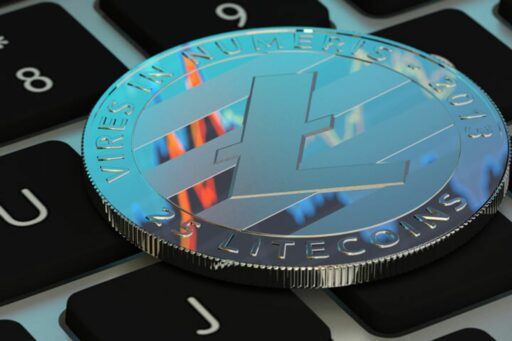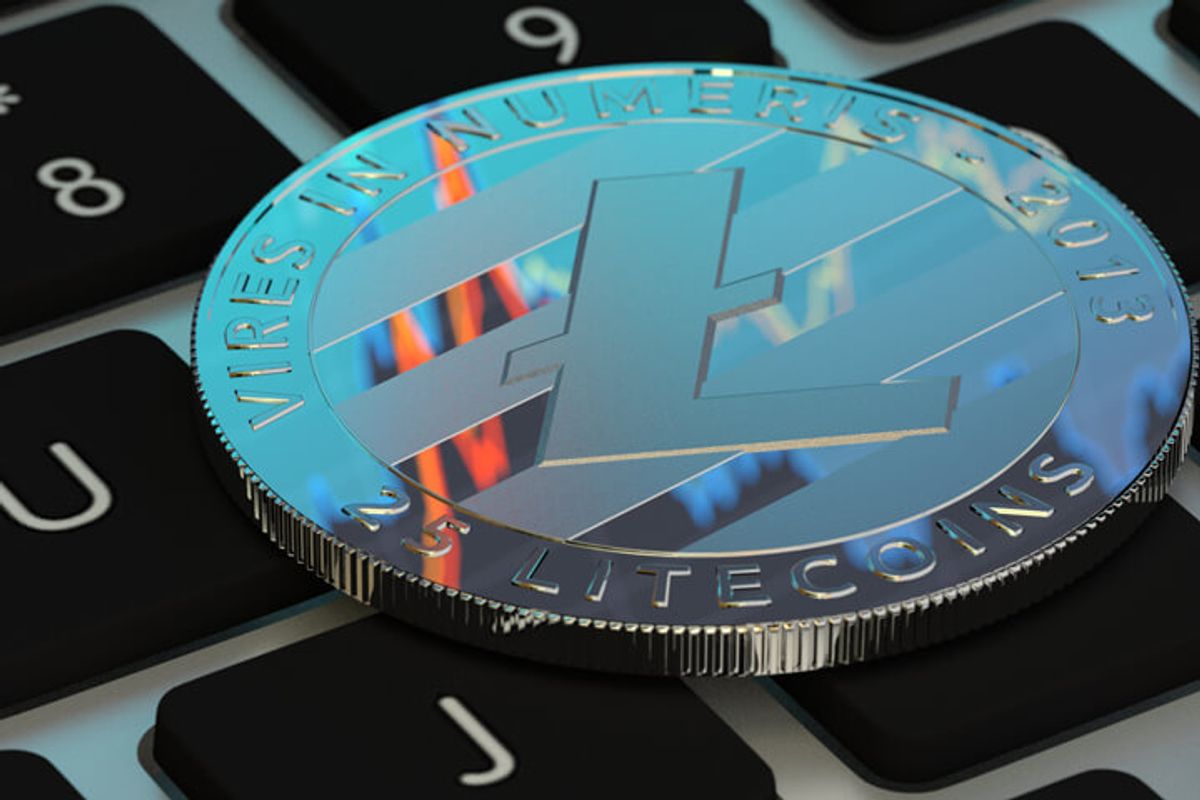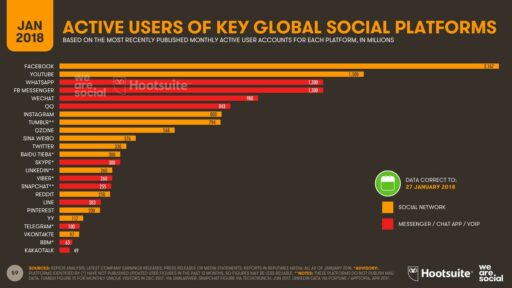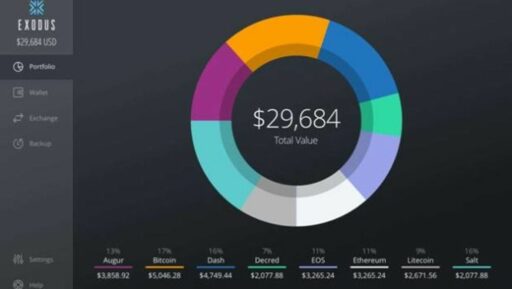The emergence of token-based crypto economic models has significantly reshaped the landscape of digital assets and blockchain technology. These models, often referred to as tokenomics, provide a framework for understanding and designing the economic systems that govern the creation, distribution, and utilization of tokens within blockchain networks. This article explores the foundational principles of token-based economies, the innovative advancements shaping their future, the market dynamics at play, and the broader societal impact they promise to deliver.
Key Takeaways
- Tokenomics is critical for establishing a sustainable crypto economic model that aligns stakeholder incentives and drives ecosystem growth.
- Advancements in token economics may lead to more equitable distribution models and innovative value creation within blockchain networks.
- Understanding and applying multidisciplinary approaches, including game theory and market dynamics, are essential for effective tokenomics design.
- Token-based economic models can facilitate collaborative environments and shared economies, with tokens serving as incentives for participation.
- The impact of token-based economies extends to redefining financial systems, governance, and societal structures, with significant implications for the future.
The Foundations of Token-Based Economic Models

Understanding Tokenomics and Its Significance
At the heart of every cryptocurrency project lies its economic structure, commonly referred to as tokenomics. This term, short for ‘token economics,’ encompasses the rules, incentives, and mechanisms that govern a token’s creation, distribution, and overall function within its ecosystem. Tokenomics is the backbone that ensures a crypto token’s utility, value, and the governance of its platform, particularly in decentralized applications (DApps), Initial Coin Offerings (ICOs), and Decentralized Finance (DeFi) protocols.
Tokenomics is not just a theoretical concept; it’s a practical framework that drives the success and sustainability of cryptocurrency projects. By incentivizing community participation and establishing clear governance, tokenomics fosters vibrant and sustainable decentralized ecosystems.
Understanding tokenomics is crucial for anyone involved in crypto token development. It’s the strategic blueprint that guides how a token is integrated into its ecosystem, influencing everything from its initial creation to its eventual use in transactions and governance. Here are some key components of tokenomics:
- Token Supply
- Token Distribution and Allocation
- Incentive Structures
- Governance Mechanisms
Each component plays a vital role in shaping the economic model of a cryptocurrency project, and a deep understanding of these elements is essential for creating a successful DeFi project.
Design Principles for Sustainable Token Ecosystems
Sustainable token ecosystems are built on the foundation of well-thought-out design principles that ensure long-term viability and market competitiveness. A balanced token allocation is essential for decentralized governance and fostering organic project growth. This involves distributing tokens equitably among stakeholders to avoid centralization and promote a fair and inclusive economic environment.
Key components of a sustainable tokenomics model include:
- Incentivization of network security and integrity
- Consideration for cross-chain interactions and dApp ecosystems
- Alignment with project goals and market dynamics
It is crucial to design tokenomics that not only incentivize desired behaviors but also align with the overarching goals of the project. This ensures that the token serves as a catalyst for growth and innovation within the ecosystem.
Given the complexity of creating robust tokenomics, it is often advisable to engage with experienced development companies specializing in blockchain and cryptocurrency solutions. These experts can navigate the intricacies of economic principles and blockchain technology to craft a tokenomics model that stands the test of time.
The Role of Game Theory and Mechanism Design in Tokenomics
In the realm of token-based economies, game theory and mechanism design play pivotal roles in shaping the incentives and behaviors within a crypto ecosystem. These disciplines help to ensure that the rules governing token interactions lead to a balanced and sustainable economy. By simulating various scenarios, designers can anticipate and mitigate potential issues, such as exploitation or misaligned incentives.
The success of a token economy hinges on the careful crafting of its rules and incentives, which must be robust enough to withstand strategic manipulation and adaptable to evolving market conditions.
For instance, a token’s utility mechanisms are designed to enhance its value proposition and drive user participation. However, without a strong demand mechanism, the tokenomics may weaken over time. Here’s a brief overview of the steps involved in designing and simulating a tokenomics model:
- Rule-setting: Establish core economic and incentive structures.
- Economic simulation: Model various market scenarios and user behaviors.
- Analysis and refinement: Identify and correct misalignments or vulnerabilities.
- Fine-tuning: Adjust rules and parameters to optimize the token economy.
These steps underscore the importance of a multidisciplinary approach, incorporating insights from microeconomics, probability theory, and other mathematical disciplines to create a comprehensive and resilient economic model.
Innovations and Advancements in Token Economics

Emerging Models for Equitable Token Distribution
The landscape of token-based economies is witnessing a paradigm shift with the advent of emerging models for equitable token distribution. These innovative frameworks are designed to address the disparities often seen in traditional token distribution methods, ensuring a more balanced allocation of resources and opportunities.
- Fair Launch: Tokens are distributed to participants without a pre-mine or early access to insiders, promoting equality.
- Liquidity Mining: Users earn tokens by providing liquidity to decentralized exchanges, incentivizing participation.
- Proof of Participation: Rewards are based on users’ active involvement in the network, rather than their financial stake.
These models are not just theoretical constructs but are being actively implemented, reshaping the digital economy and broadening global financial participation.
Emerging market structures prioritize safety and efficiency, while enhanced trust models support a tokenized future. Crypto tokens challenge traditional finance, offering a fresh perspective on value creation and distribution.
The Intersection of Tokenomics and Technological Innovation
The symbiosis of tokenomics and technological innovation is reshaping the landscape of digital economies. As blockchain technology evolves, so too does the complexity and capability of token-based systems. Innovations in token design are not only enhancing the functionality of tokens but also expanding their use cases beyond traditional financial transactions.
Tokenomics in crypto gaming, for instance, drive player incentives, integrating tokens for rewards and engagement. Play-to-earn models and NFTs redefine value and ownership in digital entertainment, offering a glimpse into the future of interactive economies.
The integration of advanced smart contracts and decentralized finance (DeFi) protocols into tokenomics frameworks is enabling more sophisticated economic models. These models are designed to be self-regulating and to provide transparent, trustless interactions among participants.
Creating effective tokenomics requires a nuanced understanding of various factors that influence a token’s utility and value. Here are some key considerations:
- Alignment with project goals and user incentives
- Long-term sustainability and adaptability to market changes
- Governance mechanisms for decentralized decision-making
- Equitable distribution and value creation strategies
Redefining Value Creation in Blockchain Networks
Blockchain technology has ushered in a new era of digital interactions, enabling secure, transparent, and decentralized applications. At the heart of this revolution lies the concept of the token economy
- a system fueled by cryptocurrencies and utility tokens that incentivize participation and power various blockchain functionalities.
Innovations in tokenomics are paving the way for new models that offer more sustainable and equitable distribution mechanisms. These models could redefine how value is created and shared within blockchain networks, impacting their development and use.
Blockchain empowers new models of peer-to-peer collaboration, and utility tokens act as the lubricant, fueling the sharing economy and incentivizing participation in the gig economy.
For instance, a decentralized marketplace for digital art and collectibles, such as Rarible, operates on the Ethereum blockchain, showcasing how value is being redefined in digital artistry.
Token Utility and Market Dynamics

Analyzing Supply-Demand Equilibrium in Token Markets
The equilibrium between supply and demand is the linchpin of any market, and token markets are no exception. By analyzing this equilibrium, stakeholders can predict how token prices might fluctuate and identify the levers that can influence market stability.
Simulating the supply-demand dynamics is a proactive step for token issuers, often web3 startups, to anticipate market behaviors. Agent-based modeling and computer simulations are tools that can model interactions among various market participants, such as token holders and validators. This approach is crucial for understanding the market’s supply and demand dynamics and ensuring the robustness of the tokenomics model.
- Agent-based modeling
- Computer simulations
- Market participant interactions
- Emergent behaviors analysis
The goal is to create a tokenomics model that is both resilient and adaptable, capable of withstanding market pressures and evolving with the ecosystem.
A multidisciplinary approach, incorporating game theory, microeconomics, and optimization techniques, is essential for designing a tokenomics model that aligns incentives with desired outcomes. This comprehensive strategy ensures that the token’s utility mechanisms are well-integrated with demand mechanisms, preventing the erosion of tokenomics over time.
The Influence of Consensus Mechanisms on Token Economics
Consensus mechanisms are the backbone of cryptocurrency networks, dictating how transactions are validated and blocks are added to the blockchain. The choice of consensus mechanism is a critical factor that shapes the economic model of a token. For example, Proof of Work (PoW) mechanisms require miners to solve complex mathematical problems, which in turn demands substantial computational power and energy consumption. This has direct economic implications, influencing the cost of mining and the distribution of mining rewards.
In contrast, Proof of Stake (PoS) systems incentivize token holders to participate in network validation in exchange for staking rewards. This shift from energy-intensive mining to staking alters the economic landscape, potentially reducing operational costs and enabling a more equitable distribution of rewards. The following table summarizes key differences between PoW and PoS in terms of their economic impact:
| Consensus Mechanism | Energy Consumption | Reward Distribution | Scalability |
|---|---|---|---|
| Proof of Work (PoW) | High | Miner-centric | Limited |
| Proof of Stake (PoS) | Low | Stakeholder-centric | Enhanced |
The interplay between consensus mechanisms and token economics is complex and multifaceted. It not only affects the immediate costs and rewards associated with maintaining the network but also has long-term implications for the sustainability and growth of the token ecosystem.
Simulating Market Behaviors to Optimize Tokenomics
Simulating market behaviors is a critical step in the development of token-based economic models. By employing agent-based modeling and computer simulations, stakeholders can explore various scenarios and their potential impacts on the token ecosystem. This process is essential for identifying potential issues and fine-tuning the tokenomics model to ensure long-term sustainability and adoption.
The initial phase of simulation involves setting foundational rules that define the economic and incentive structures of the token. These rules are pivotal as they serve as the parameters for the simulation and subsequent refinement. A failure to establish robust rules can result in misaligned incentives and unsustainable token economics.
Scenario planning is then utilized to test and refine token designs under a multitude of conditions. This iterative process evaluates the robustness, scalability, and resilience of the token mechanisms, aiming to maximize efficacy while mitigating risks.
The objective of simulating market behaviors is not only to optimize the tokenomics but also to ensure that the token can withstand adversities and maintain its intended functions within the ecosystem.
Creating Collaborative and Shared Economic Models

Tokens as a Means to Foster Collaborative Environments
In the realm of blockchain, tokens are not just a medium of exchange but a powerful tool for collaboration. Tokens incentivize collective action and participation, essential for the growth of decentralized applications (dApps). For instance, a decentralized storage platform may reward users with tokens for contributing storage space, effectively turning individual resources into a collective asset.
The versatility of tokens allows them to represent a wide array of assets, from tangible goods like real estate to intangible rights such as governance in a DAO. This multifaceted nature enables tokens to facilitate various collaborative activities within the blockchain ecosystem:
- Creating a Shared Economy: Tokens enable the development of shared economic models, such as rewarding content creators based on user engagement.
- Incentivizing Participation: Users are encouraged to contribute to a platform’s growth, like providing storage space, in exchange for tokens.
- Enabling Governance: Token holders can gain voting rights, allowing them to influence the direction and development of a project.
The strategic use of tokens can create semi-cooperative environments where participants work together towards common goals while retaining individual agency. This delicate balance of cooperation and competition is a cornerstone of sustainable token ecosystems.
As we delve deeper into the token economy, it becomes clear that these digital assets are more than just currency; they are the building blocks of a new era of collaborative digital structures.
Case Studies: Token-Based Rewards in Decentralized Platforms
Decentralized platforms have pioneered the use of token-based rewards to incentivize various forms of participation and contribution. Token rewards have become a cornerstone in creating vibrant, self-sustaining ecosystems that encourage user engagement and value creation.
- Content Creation and Curation: Users are motivated to contribute quality content, with tokens acting as a tangible recognition of their efforts.
- Decentralized Reputation Systems: Tokens serve as a measure of a user’s trustworthiness and performance within a platform, influencing their opportunities and interactions.
- Data Access and Marketplace: Tokens unlock access to exclusive data or services, facilitating a dynamic marketplace for digital assets and information.
The strategic implementation of token rewards can significantly enhance user experience and platform growth, fostering a culture of collaboration and mutual benefit.
Micro-tasking has also emerged as a fertile ground for token-based incentives. Platforms reward users for completing simple tasks, thereby integrating them into the broader economic model of the platform. This approach not only diversifies the ways in which users can earn tokens but also expands the utility of the platform itself.
Challenges and Opportunities in Shared Economy Token Models
The shared economy token models present a landscape of both challenges and opportunities that could shape the future of decentralized platforms. On one hand, token-based systems empower users, granting them greater control over their data and digital assets. This user-centric approach is a significant shift from traditional economic models.
However, the path to a mature token economy is fraught with obstacles. Regulatory clarity is paramount; without comprehensive frameworks, the ecosystem risks security and stability. Market volatility remains a concern, with the value of tokens subject to dramatic fluctuations, potentially deterring adoption.
The maturation of the cryptocurrency market and the evolution of tokenomics are pivotal in defining the utility, security, and governance of tokens within the crypto ecosystem.
Opportunities for innovation are abundant. New tokenomics models could emerge, offering more sustainable and equitable distribution mechanisms. These models have the potential to redefine value creation within blockchain networks, as seen with the rise of NFTs and their transformative impact on digital ownership and asset management in the metaverse.
The Broader Impact of Token-Based Economies

Revolutionizing Financial Systems and Governance Models
Token-based crypto economic models are poised to revolutionize financial systems and governance models, introducing a new era of decentralized finance (DeFi) that promises to democratize access to financial services. By leveraging blockchain technology, these models enable peer-to-peer transactions without intermediaries, reducing costs and enhancing efficiency.
The transformative potential of token-based economies extends beyond financial transactions, challenging traditional power structures and fostering a more inclusive global economy.
The implications of this shift are profound, with the potential to reshape not only the financial sector but also the gig economy, identity management, and asset ownership. Here are some key areas of impact:
- Disruption of Traditional Industries: Finance, supply chain, and entertainment are among the sectors facing a paradigm shift.
- Democratization of Financial Services: Blockchain’s reach extends to those previously excluded from the financial system.
- Innovations in Tokenomics: New economic models could emerge, promoting sustainable and equitable value distribution.
As we look to the future, the continued evolution of token economies holds the promise of a more efficient, secure, and transparent world, fundamentally altering the way we interact with and understand value.
The Societal Implications of Decentralized Economic Structures
The proliferation of blockchain technology has ushered in a new era of economic structures, with far-reaching implications for consumers across the globe. The decentralized nature of blockchain allows for the creation of ecosystems that are resistant to traditional forms of control and influence, fostering a more equitable environment for value exchange.
- Decentralized Finance (DeFi): A transformative force in the financial sector, offering increased accessibility and autonomy.
- Gig Economy: Potential for tokenized micro-tasks to empower individuals in a global marketplace.
- Governance and Identity: Blockchain could revolutionize voting systems and identity management, enhancing transparency and security.
The future of blockchain holds the promise of a more efficient and transparent world, where the power of decentralized tokens could redefine our societal structures.
As we continue to design and adopt blockchain ecosystems within the sharing economy, it is crucial to explore the dynamics of token-based economies and their connection to economic theories. Innovations in tokenomics may lead to new models that could significantly alter the development and use of blockchain applications, ultimately shaping the societal landscape.
Future Prospects: The Evolution of Token Economies
The token economy, at its core, is a dynamic and evolving landscape. As blockchain technology advances, the token economy could undergo significant changes, impacting their development and use. Innovations in Tokenomics may pave the way for new models that offer more sustainable and equitable distribution mechanisms, potentially redefining value creation within blockchain networks.
The future of tokens is intrinsically linked to the continuous advancements in blockchain technology. We may witness:
- Empowering Users: A shift towards a more user-centric approach, where token economies give users greater control over their data and digital assets.
- New Use Cases: As the technology matures, new and innovative applications for tokens will likely surface, further fueling the growth of decentralized systems.
The potential of utility tokens and cryptocurrencies to revolutionize blockchain applications is immense. This is just the beginning, and as the ecosystem evolves, we can expect a myriad of groundbreaking applications to emerge.
While the prospects are promising, the path forward is not without its challenges. Addressing these will be crucial for the sustainable growth of token economies.
Conclusion
The exploration of token-based crypto economic models, or tokenomics, reveals a complex and dynamic landscape that is reshaping the future of decentralized systems. By integrating multidisciplinary approaches, including game theory, microeconomics, and computer simulations, stakeholders can design token economies that incentivize positive behaviors, ensure sustainable growth, and align interests across the board. Innovations in tokenomics promise more equitable value distribution, potentially redefining the creation and sharing of wealth within blockchain networks. As we stand at the cusp of this financial revolution, it is clear that the thoughtful application of tokenomics will play a pivotal role in the evolution of digital economies, challenging traditional paradigms and fostering a new era of economic and social interaction.
Frequently Asked Questions
What is tokenomics and why is it significant in crypto economic models?
Tokenomics refers to the economic model of a cryptocurrency token, encompassing factors such as token supply, distribution, inflation rate, and token utility. It is significant because it defines the sustainability and robustness of a crypto project’s ecosystem, incentivizing desired behaviors and aligning stakeholder interests.
How does game theory contribute to the design of token-based economic models?
Game theory and mechanism design are essential in tokenomics as they create incentive structures that encourage desired user behaviors and discourage exploitation. They help in ensuring that the economic model is fair and sustainable by predicting participant interactions and outcomes.
What are the potential impacts of innovations in tokenomics on blockchain networks?
Innovations in tokenomics could lead to more sustainable and equitable distribution mechanisms, redefining how value is created and shared within blockchain networks. This could result in more inclusive financial systems and new models of value exchange.
How do consensus mechanisms influence token economics?
Each consensus mechanism, such as Proof of Work (PoW) or Proof of Stake (PoS), has distinct economic implications. For instance, PoW requires significant computational power and energy, impacting the economics of mining and token distribution, while PoS might incentivize token holding and network participation differently.
What role do tokens play in fostering collaborative environments within blockchain applications?
Tokens can incentivize collaboration by rewarding participants for their contributions to the network, such as content creation or validation services. For example, a decentralized platform might reward users with tokens based on engagement or other valuable actions, fostering a shared economic model.
How might the broader financial systems and governance models be revolutionized by token-based economies?
Token-based economies have the potential to revolutionize financial systems by introducing decentralized governance models, alternative investment opportunities, and new forms of digital ownership. This could lead to more democratic financial participation and a shift in how economic and social interactions are structured.





